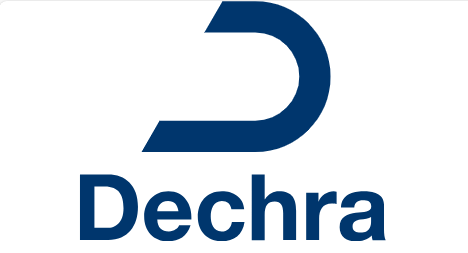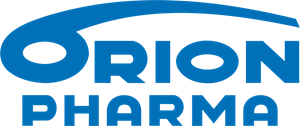Similar packages
Equipalazone Original
Active substance
ATC code
Species
Horses and ponies (non-food producing).
Indications
For the treatment of musculoskeletal disorders in horses and ponies where the antiinflammatory and analgesic properties of phenylbutazone can offer relief. Examples of conditions normally considered suitable for treatment with phenylbutazone include lameness associated with osteoarthritic conditions, acute and chronic laminitis, bursitis and carpitis, and in the reduction of post-surgical soft tissue reaction.
Dose to be administered and administration route
Oral use. When mixed with a concentrate feed, the veterinary medicinal product was shown to be palatable to horses.
The dosage should be adjusted according to the individual animal’s response, but the following may be taken as a guide:
Horses 450 kg (1000 lb) body weight: the contents of two sachets to be administered twice on day 1 of treatment (equivalent to 8.8 mg/kg/day) followed by the contents of one sachet twice daily for four days (4.4 mg/kg/day), then one sachet daily, or on alternate days, sufficient to keep the horse comfortable (2.2 mg/kg/day).
Ponies 225 kg (500 lb) body weight, one sachet (4.4 mg/kg) on alternate days.
Discontinue treatment if no response is evident after four to five days treatment.
For ease of administration mix the powder with a small quantity of feed.
Dampening of the veterinary medicinal product in feed 5 minutes prior to feeding has been shown to have no detrimental influence on the palatability of the veterinary medicinal product. However, the influence of prolonged dampening on palatability or stability of the veterinary medicinal product is not known.
Adverse reactions
Horses and ponies (non-food producing):
|
Rare (1 to 10 animals / 10,000 animals treated): |
Gastric intolerance* Renal disorder* |
* In common with other NSAIDs that inhibit prostaglandin synthesis, there may be gastric and/or renal intolerance. This is usually associated with overdosage. Recovery is usual on cessation of treatment and following the initiation of supportive symptomatic therapy (see 3.10 for further information).
If adverse reactions occur, treatment should be discontinued and the advice of a veterinarian should be sought.
Reporting adverse events is important. It allows continuous safety monitoring of a veterinary medicinal product. Reports should be sent, preferably via a veterinarian, to either the marketing authorisation holder or its local representative or the national competent authority via the national reporting system. See the package leaflet for respective contact details.
Dispensing
POM-V - Prescription Only Medicine – VeterinarianSUMMARY OF PRODUCT CHARACTERISTICS
1. NAME OF THE VETERINARY MEDICINAL PRODUCT
Equipalazone Original 1 g oral powder
2. QUALITATIVE AND QUANTITATIVE COMPOSITION
Active substance: per sachet
Phenylbutazone 1 g
Excipient(s)
For the full list of excipients, see section 6.1.
3. PHARMACEUTICAL FORM
Oral powder.
White/cream powder.
4. CLINICAL PARTICULARS
4.1 Target species
Horses and ponies (non-food producing).
4.2 Indications for use, specifying the target species
For the treatment of musculoskeletal disorders in horses and ponies where the antiinflammatory and analgesic properties of phenylbutazone can offer relief. Examples of conditions normally considered suitable for treatment with phenylbutazone include lameness associated with osteoarthritic conditions, acute and chronic laminitis, bursitis and carpitis, and in the reduction of post-surgical soft tissue reaction.
4.3 Contraindications
The therapeutic index of phenylbutazone is low. Do not exceed the stated dose or the duration of treatment.
Do not administer with other non-steroidal anti-inflammatory drugs (NSAIDs) concurrently or within 24 hours of each other.
Do not use in animals suffering from cardiac, hepatic or renal disease; where there is the possibility of gastrointestinal ulceration or bleeding; or where there is evidence of a blood dyscrasia.
Do not use in cases of known hypersensitivity to the active substance or to any of the excipients.
4.4 Special warnings for each target species
The clinical effect of phenylbutazone can be evident for at least three days following cessation of administration. This should be borne in mind when examining horses for soundness.
4.5 Special precautions for use Special precautions for use in animals
Use in any animal under six weeks of age, or in aged animals, may involve additional risks. If such use cannot be avoided, animals may require a reduced dosage and special clinical management.
Avoid use in any dehydrated, hypovolaemic or hypotensive animal as there is a risk of increased toxicity.
It is preferable that NSAIDs which inhibit prostaglandin synthesis are not administered to animals undergoing general anaesthesia until fully recovered. Response to long-term therapy should be monitored at regular intervals by a veterinary practitioner.
NSAIDs can cause inhibition of phagocytosis and hence in the treatment of inflammatory conditions associated with bacterial infections, appropriate concurrent antimicrobial therapy should be instigated.
Special precautions to be taken by the person administering the veterinary medicinal product to animals
The product should be handled with care at all times to reduce the risk of accidental ingestion, skin contact or dust inhalation. If accidental skin or eye contact occurs, the site should be washed immediately with water. If the product is ingested, seek medical advice and show the product packaging.
Advice to doctors: gastric lavage (emesis in children) should be performed urgently. Charcoal haemoperfusion has also been shown to be beneficial. Treatment should then be administered symptomatically.
4.6 Adverse reactions (frequency and seriousness)
In common with other NSAIDs that inhibit prostaglandin synthesis, there may be gastric and/or renal intolerance. This is usually associated with overdosage and such events are rare. Recovery is usual on cessation of treatment and following the initiation of supportive symptomatic therapy (see 4.10 for further information). If adverse reactions occur, treatment should be discontinued and the advice of a veterinarian should be sought.
4.7 Use during pregnancy, lactation or lay
The safety of phenylbutazone in pregnancy has not been established. Use during pregnancy should be avoided whenever possible, particularly during the first trimester.
4.8 Interaction with other medicinal products and other forms of interaction
Some NSAIDs may be highly bound to plasma proteins and compete with other highly bound drugs to produce an increase in non-bound pharmacologically active concentrations which can lead to toxic effects. Concurrent administration of potential nephrotoxic drugs (e.g. aminoglycoside antibiotics) should be avoided. Gastrointestinal tract ulceration may be exacerbated by corticosteroids in animals given NSAIDs.
4.9 Amounts to be administered and administration route
For oral administration only. When mixed with a concentrate feed, the product was shown to be palatable to horses.
The dosage should be adjusted according to the individual animal’s response, but the following may be taken as a guide:
Horses 450 kg (1000 lb) body weight: the contents of two sachets to be administered twice on day 1 of treatment (equivalent to 8.8 mg/kg/day) followed by the contents of one sachet twice daily for four days (4.4 mg/kg/day), then one sachet daily, or on alternate days, sufficient to keep the horse comfortable (2.2 mg/kg/day).
Ponies 225 kg (500 lb) body weight, one sachet (4.4 mg/kg) on alternate days.
Discontinue treatment if no response is evident after four to five days treatment.
For ease of administration mix the powder with a small quantity of feed.
Dampening of the veterinary medicinal product in feed 5 minutes prior to feeding has been shown to have no detrimental influence on the palatability of the product. However, the influence of prolonged dampening on palatability or stability of the product is not known.
4.10 Overdose (symptoms, emergency procedures, antidotes), if necessary
Overdosing may result in gastric and large intestinal ulceration and general enteropathy. Renal papillary damage may also occur with impaired renal function. Subcutaneous oedema, especially under the jaw may become evident due to plasma protein loss.
There is no specific antidote. If signs of possible overdosage occur, treat the animal symptomatically.
The therapeutic index of phenylbutazone is low. In man, charcoal haemoperfusion in conjunction with dopamine has been used successfully to treat overdosage with phenylbutazone, but there is no experience of the use of this technique in the horse. 4.11 Withdrawal periods
Not to be used in horses intended for human consumption.
Treated horses may never be slaughtered for human consumption.
The horse must have been declared as not intended for human consumption under national horse passport legislation.
5. PHARMACOLOGICAL OR IMMUNOLOGICAL PROPERTIES Pharmacotherapeutic group: Anti-inflammatory and antirheumatic products, nonsteroids.
ATC Vet Code: QM01AA01
5.1 Pharmacodynamic properties
Phenylbutazone acts by inhibiting the production of prostaglandins. Prostaglandins possess a wide variety of physiological properties, including those involved in the production of pain, inflammation and pyrexia. The main metabolite, oxyphenbutazone, possesses similar pharmacological properties.
5.2 Pharmacokinetic particulars
Phenylbutazone is generally well absorbed following oral administration. The rate, but not the extent, of absorption may be affected due to binding of phenylbutazone to food and the contents of the gastrointestinal tract. Therefore, it is recommended that Equipalazone Original Powder is administered mixed with a small amount of bran or oats. Phenylbutazone is highly bound to plasma proteins.
6. PHARMACEUTICAL PARTICULARS
6.1 List of excipients
Acacia
Gelatin
Silicon dioxide
6.2 Major Incompatibilities
None known.
6.3 Shelf life
Shelf life of veterinary medicinal product as packaged for sale: 4 years.
6.4 Special precautions for storage
Do not store above 25°C. Store in a dry place.
6.5 Nature and composition of immediate packaging
Sachets of a paper/polyethylene outer layer and aluminium/polyethylene inner layer, in packs of 100 sachets (25 strips of four sachets) and of 32 sachets (8 strips of four sachets). Each sachet contains 1.5 g Equipalazone Original Powder. Not all pack sizes may be marketed.
6.6 Special precautions for the disposal of unused veterinary medicinal product or waste materials derived from the use of such products
Any unused veterinary medicinal product or waste materials derived from such veterinary medicinal products should be disposed of in accordance with national requirements.
7. MARKETING AUTHORISATION HOLDER
Dechra Limited
Snaygill Industrial Estate
Keighley Road
Skipton
North Yorkshire
BD23 2RW
United Kingdom
8. MARKETING AUTHORISATION NUMBER
Vm 10434/4005
9. DATE OF FIRST AUTHORISATION
26 August 1994
10. DATE OF ANY REVISION OF THE TEXT
 February 2020
February 2020
Approved: 14 February 2020

| Art. Nr. | 10434/4005 |
|---|---|
| EAN | 5701170427196 |
 TRUSTED SOURCE
TRUSTED SOURCE








